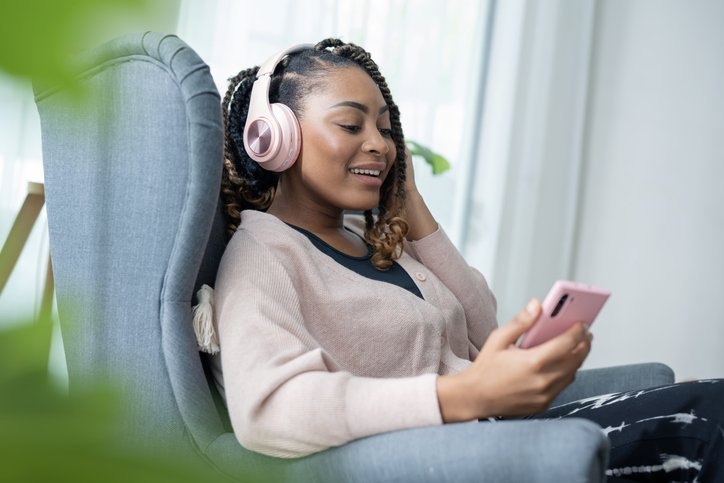TL;DR: Podcasts are going visual. New YouGov data shows nearly half of UK listeners who use both formats now prefer video, especially younger audiences. Fans say video makes podcasts richer and more engaging, with facial expressions and social clips driving discovery. YouTube is catching Spotify as a top podcast platform. While audio still leads for multitasking, video is booming — pushing creators and brands to think visual-first.
Podcasts were once defined by their audio-only format. But recent poll data from YouGov Surveys: Serviced suggests the medium is evolving, and for a growing number of listeners, video is now the preferred way to tune in.
Among 2,046 UK adults surveyed, 43% say they consume podcasts in audio format, while 22% say they watch them in video. Half (49%) say they don’t consume podcasts at all. But among those who consume both video and audio formats, a shift emerges: 48% prefer video, while 42% prefer audio. The gap is most striking among younger listeners where 47% of 18–24-year-olds say they prefer video, compared to just 12% of those aged 55 and over.
So, what’s driving this preference? Among those who choose video, 71% say it’s a more engaging or richer experience, and 61% point to facial expressions and body language. Others cite general video habits (45%), being visual learners (37%), and discovering short clips on social media (33%).
The platforms reflect that shift. Spotify remains the most-used podcast app (49%) overall, but YouTube follows closely at 43%, ahead of BBC Sounds (33%) and Apple Podcasts (18%). BBC Sounds is especially popular among older audiences: 53% of those aged 55+ use it, significantly more than any other age group. In contrast, Spotify is least used by this same age bracket.
Device preferences vary. Most podcast listeners use smartphones (83%), with usage highest among younger age groups. Smart TV use stands at 18% overall, rising to 23% among those aged 35-44. Laptops and PCs are more common among younger listeners, while 9% of 35–44s still use iPods, more than any other age group.
When it comes to discovering new shows, video podcast fans are more likely to rely on social media (48%) and YouTube or Shorts (46%) than audio listeners (37% and 21%, respectively). Audio listeners, on the other hand, are more likely to use in-app search (35%) or rely on friend/family recommendations (40%).
Genre preferences differ subtly by format. Comedy (41%) and news and politics (37%) are equally popular across both. But video podcast consumers are slightly more likely to listen to sports (29% vs. 22%), health and fitness (23% vs. 17%), and self-care (21% vs. 16%). In contrast, fiction and storytelling is more popular on audio (23%) than video (13%), suggesting different listening contexts or expectations depending on the format.
It’s not just behaviours that are shifting, attitudes are too. Half of podcast consumers who consume both audio and video (50%) say they’re watching more video podcasts than they used to, and 59% believe that eventually, all podcasts will be available in both formats. For marketers, this matters: 39% say they’re more likely to look up a product advertised on a video podcast than an audio one. And while audio remains better suited to multitasking, a view held by 89%.
Together, these trends paint a picture of a format in transition. Audio continues to lead in reach, portability, and passive listening. However, video is increasingly gaining favour. For creators and brands alike, the opportunity may lie in flexibility: meeting audiences where they are, whether that’s in their headphones or on their screens.
